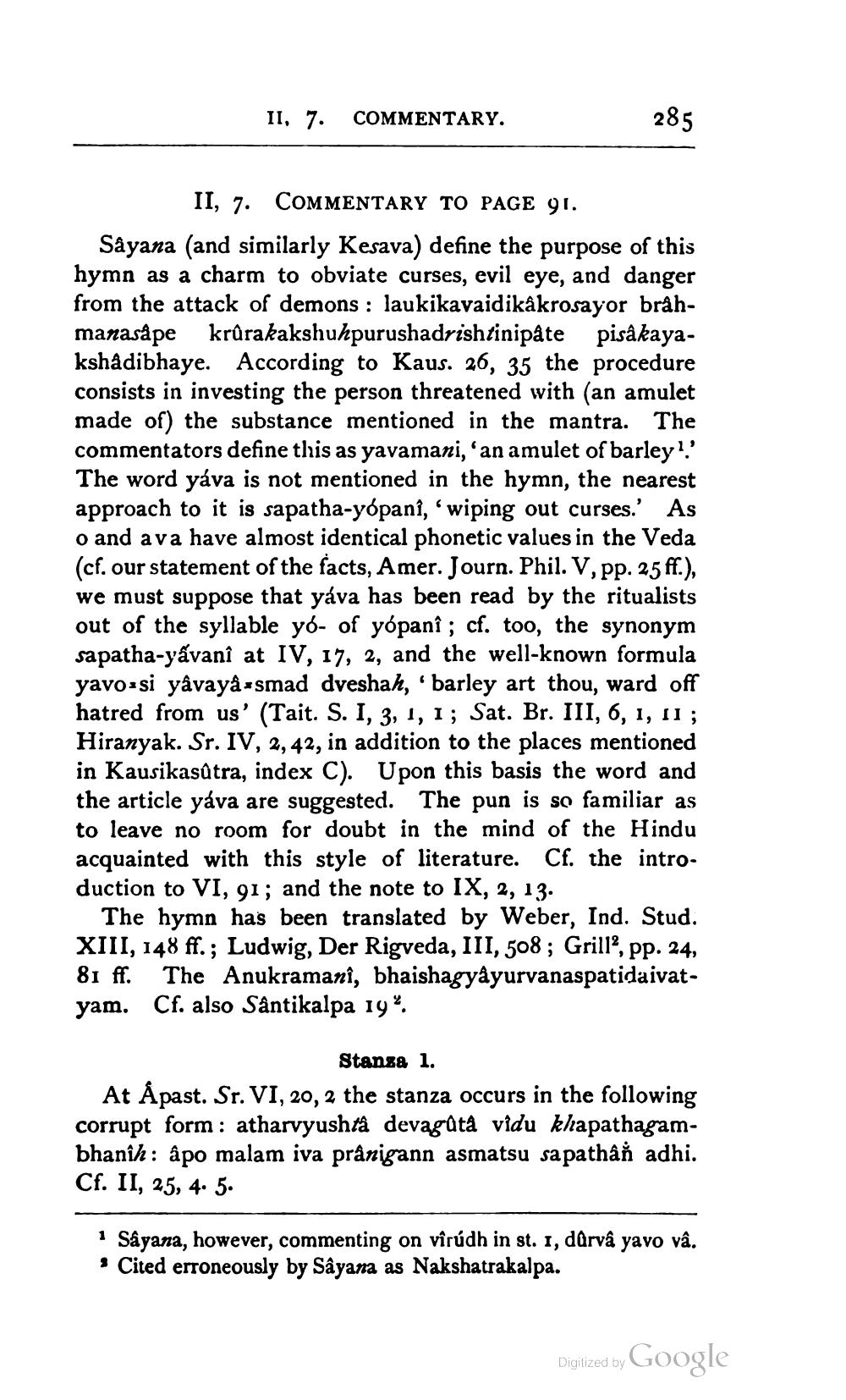________________
II, 7. COMMENTARY.
285
II, 7. COMMENTARY TO PAGE 91. Sayana (and similarly Kesava) define the purpose of this hymn as a charm to obviate curses, evil eye, and danger from the attack of demons : laukikavaidikåkrosayor bråhmanasåpe krůrakakshuhpurushadrishtinipâte pisâkayakshâdibhaye. According to Kaus. 26, 35 the procedure consists in investing the person threatened with (an amulet made of) the substance mentioned in the mantra. The commentators define this as yavamani,'an amulet of barley?' The word yáva is not mentioned in the hymn, the nearest approach to it is sapatha-yopani, 'wiping out curses. As o and a va have almost identical phonetic values in the Veda (cf. our statement of the facts, Amer. Journ. Phil. V, pp. 25 ff.), we must suppose that yáva has been read by the ritualists out of the syllable yo- of yopanî; cf. too, the synonym sapatha-yávanî at IV, 17, 2, and the well-known formula yavo-si yâvaya-smad dveshah, 'barley art thou, ward off hatred from us' (Tait. S. I, 3, 1, 1; Sat. Br. III, 6, 1, 11; Hiranyak. Sr. IV, 2, 42, in addition to the places mentioned in Kausikasútra, index C). Upon this basis the word and the article yáva are suggested. The pun is so familiar as to leave no room for doubt in the mind of the Hindu acquainted with this style of literature. Cf. the introduction to VI, 91; and the note to IX, 2, 13.
The hymn has been translated by Weber, Ind. Stud. XIII, 148 ff.; Ludwig, Der Rigveda, III, 508 ; Grill?, pp. 24, 81 ff. The Anukramani, bhaishagyàyurvanaspatidaivatyam. Cf. also Sântikalpa 19%.
Stansa 1. At Åpast. Sr. VI, 20, 2 the stanza occurs in the following corrupt form : atharvyushtà devagata vidu khapathagambhanîh : âpo malam iva prânigann asmatsu sa pathâň adhi. Cf. II, 25, 4. 5.
· Sâyana, however, commenting on vîrúdh in st. 1, dürvâ yavo vâ. s Cited erroneously by Sâyana as Nakshatrakalpa.
Digized by Google




